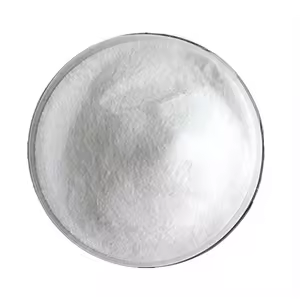Description
D-Tagatose: A Sweet Alternative with Potential Health Benefits
In the ever-evolving landscape of sweeteners, D-Tagatose is emerging as a promising alternative to traditional sugars. While often lesser known than its counterparts like sucrose or fructose, D-Tagatose boasts a unique profile, including a low glycemic index and potential prebiotic effects, making it a compelling option for individuals seeking to manage their blood sugar or improve their gut health.
What is D-Tagatose?
D-Tagatose is a naturally occurring monosaccharide, a simple sugar similar to glucose and fructose. It’s found in small amounts in certain fruits and dairy products. Commercially, however, it’s typically produced by enzymatically converting D-galactose, a sugar derived from lactose (milk sugar).
Key Features and Benefits:
- Low Glycemic Index (GI): This is arguably D-Tagatose’s most significant advantage. With a glycemic index of 0-10 (compared to sucrose’s 65 and glucose’s 100), it has a minimal impact on blood sugar levels. This makes it particularly appealing for individuals with diabetes or those looking to manage their weight.
- Low Calorie: D-Tagatose is only about 38% as sweet as sucrose, and it’s also less calorie-dense. This allows you to achieve a similar level of sweetness with fewer calories compared to traditional sugar.
- Prebiotic Properties: Emerging research suggests that D-Tagatose may act as a prebiotic, meaning it can stimulate the growth of beneficial bacteria in the gut. A healthy gut microbiome contributes to improved digestion, immune function, and overall well-being.
- Safe for Diabetics: Due to its negligible effect on blood sugar, D-Tagatose is generally considered safe for individuals with diabetes. However, it’s always prudent to consult with a healthcare professional or registered dietitian for personalized recommendations.
- Tooth-Friendly: Unlike sucrose, D-Tagatose doesn’t promote tooth decay as readily. It’s not easily metabolized by bacteria in the mouth, reducing the production of enamel-eroding acids.
Potential Applications:
The unique properties of D-Tagatose lend themselves to a wide range of applications in the food and beverage industry:
- Sweetener in Foods and Beverages: It can be used as a sugar substitute in various products, including yogurt, beverages, baked goods, and confectionery.
- Medical Foods and Nutritional Supplements: Its low GI makes it a suitable ingredient for products aimed at managing blood sugar or promoting gut health.
- Pharmaceuticals: Research is exploring its potential use in various pharmaceutical applications.
Considerations and Potential Side Effects:
While D-Tagatose offers numerous benefits, it’s important to be aware of potential side effects, particularly when consumed in large amounts. Some individuals may experience:
- Gastrointestinal Discomfort: Excessive consumption can lead to gas, bloating, and diarrhea. This is because D-Tagatose is not fully absorbed in the small intestine.
- Individual Sensitivity: As with any food ingredient, some individuals may be more sensitive to D-Tagatose than others.
The Future of D-Tagatose:
D-Tagatose is poised to play an increasingly important role in the sweetener market. As consumers become more health-conscious and seek out alternatives to traditional sugar, the demand for low-GI, prebiotic-rich options like D-Tagatose is likely to grow. Ongoing research is further exploring its potential health benefits, paving the way for even wider applications in the future.
Conclusion:
D-Tagatose offers a compelling combination of sweetness, low glycemic impact, and potential health benefits. While more research is needed to fully understand its long-term effects, it presents a promising alternative for individuals looking to manage their blood sugar, improve their gut health, or simply reduce their intake of traditional sugar. As with any dietary change, it’s always best to consult with a healthcare professional or registered dietitian to determine if D-Tagatose is right for you.









Reviews
There are no reviews yet.